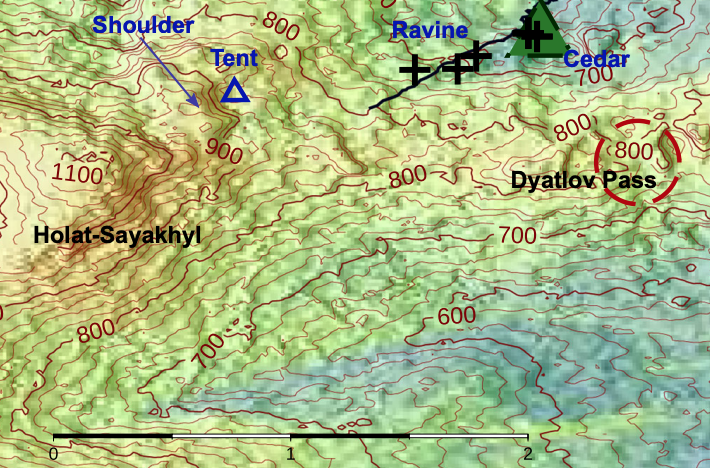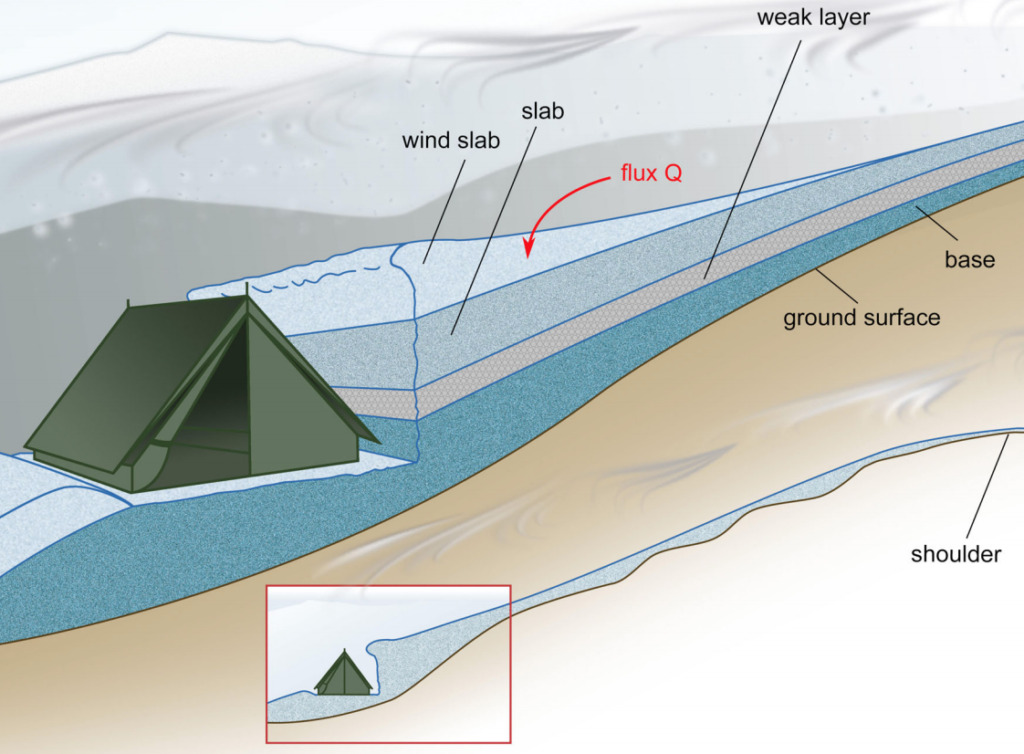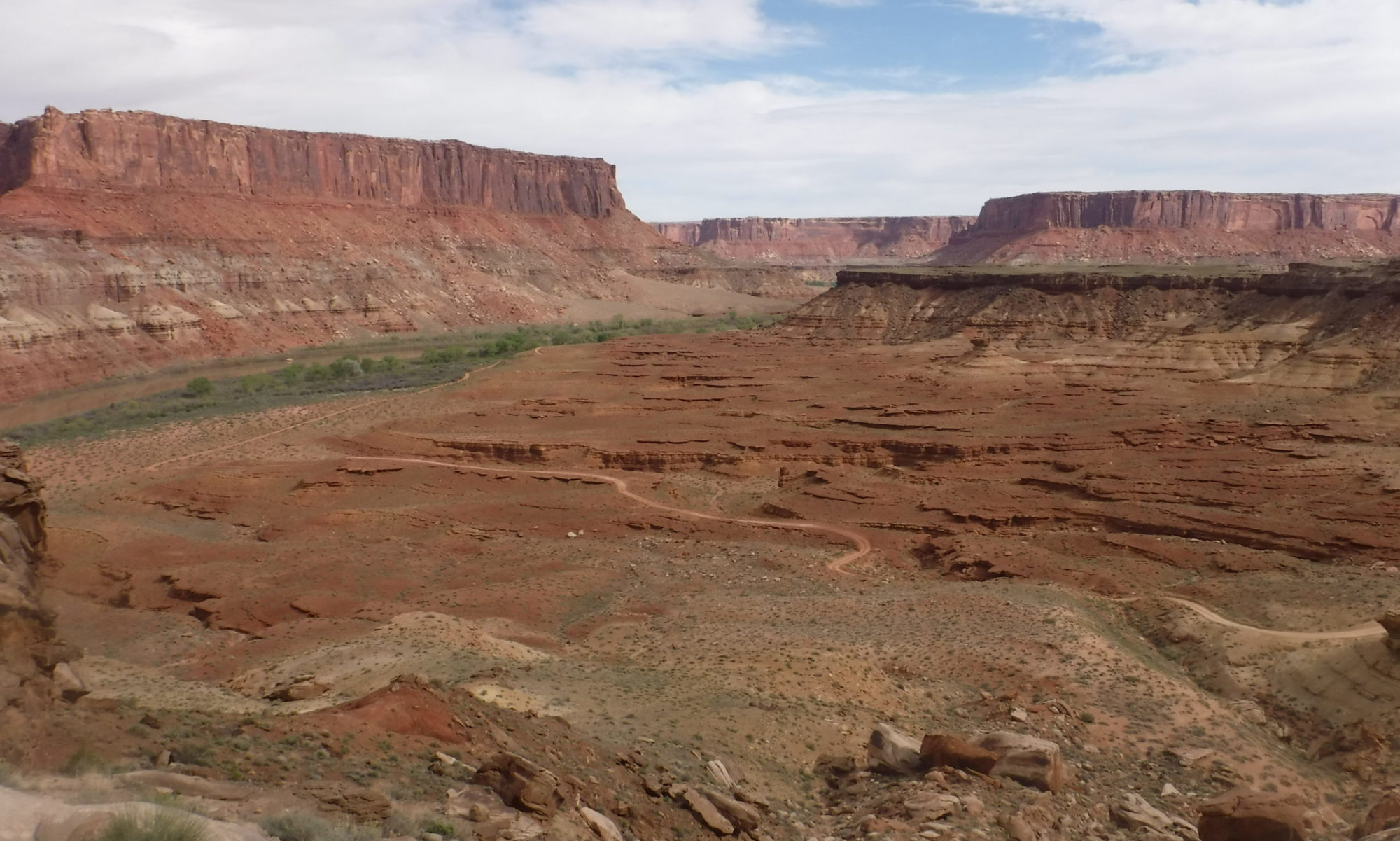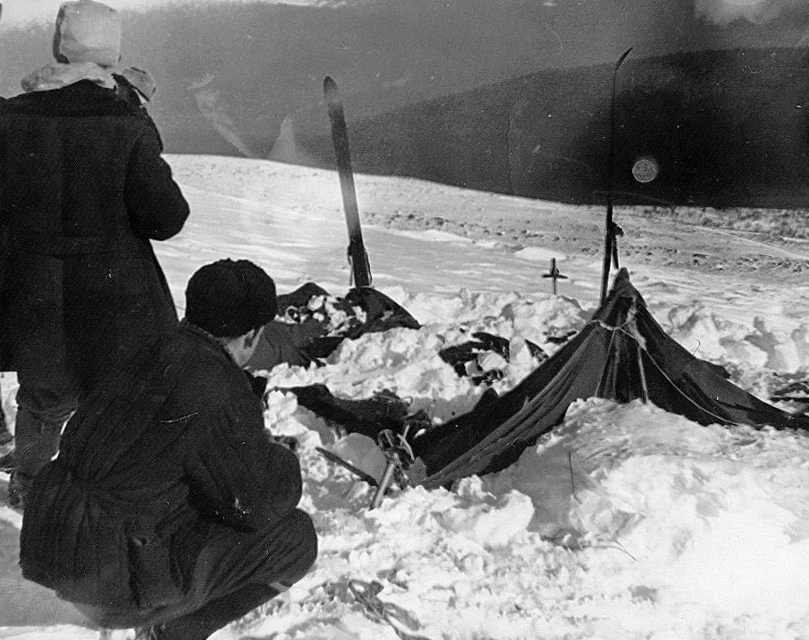Featured image: Soviet authorities investigate a mangled tent involved in the Dyatlov Pass Incident. This work is in the public domain and is not an object of copyright according to article 1259 of Book IV of the Civil Code of the Russian Federation No. 230-FZ of December 18, 2006.
In 1959, a group of nine hikers led by Igor Dyatlov trekked through the Ural Mountains in Eastern Russia on a skiing trip. After no word by telegram from the hikers for eight days, their families grew nervous and demanded a search and rescue effort. Over two weeks after the hikers planned contact with their base camp, investigators located an abandoned and mangled tent on the slope of Kholat Syakhl (“Dead Hill” in the local dialect of Mansi).
The search team was baffled, as the tent had been cut from the inside, with all of the hikers’ belongings left within. Shortly thereafter, the search team followed nine sets of footprints to the nearby woods at the foot of the mountain, where the bodies of the hikers were found. Two of the hikers were huddled around the remnants of a small fire, while three were found in poses that suggested they were attempting to return to the tent. The final four were buried underneath three meters of snow.

While hypothermia was clearly the main cause of the hikers’ deaths, the events leading up to those deaths remained unclear. Explanations ran the gamut from an assault by the local Mansi people to wind from the mountain causing panic attacks. Some people even hypothesized that the hikers had an encounter with extraterrestrials after radiation was found on one of the hiker’s belongings. However, one of the most likely explanations—an avalanche—has been highly contested due to contradictory evidence. Namely, the search team saw no evidence of a typical avalanche, the slope of the mountain at the campsite was not considered steep enough, and some of the injuries in the bodies did not align with previously reported avalanche fatalities. Despite the compelling evidence against the avalanche theory, a 2021 study might paint a clearer picture of its plausibility.
Swedish avalanche scientist Johan Gaume and geotechnical engineer Alexander M. Puzrin hypothesize, through a series of computer models, that a rare type of avalanche involving a snow slab may have killed the hikers. A snow slab is a tightly packed layer of snow that is resting on top of a looser, weaker layer. With an external forcing, the weak layer can collapse, allowing the slab above it to easily slide in one cohesive unit. While this type of avalanche is extremely uncommon, Gaume and Puzrin suggest that the slab may have begun to fail when the group of hikers cut into the snow layer to pitch their tent—inadvertently sealing their fate. Throughout the night, wind caused more snow to accumulate onto the slab, which led to the failure of the weak layer. The slab then slid and hit the hikers who were still in their tent. Likely in a panic, the group sliced their tent open and ran for cover in the forest, where they succumbed to hypothermia.

Gaume and Puzrin also ran a simulation to assess how the slab avalanche might have affected the bodies of the hikers. They calculated that the slab was likely travelling at 2 m/s, which would deform the human thorax from 28% to 34%, causing moderate to severe non-fatal injuries. While these injuries are rare in avalanche victims, they occured in this scenario since the hikers were positioned in an unconventional way—horizontally pinned between the slab and the tent floor. This study helps to shed light on a small piece of a mystery that is over six decades old, and reminds us not to underestimate the grim ways the Earth can intersect with our own lives.
Geologists might have just solved a sixty year old Russian mystery by Kevin Hurler is licensed under a Creative Commons Attribution-ShareAlike 4.0 International License.

